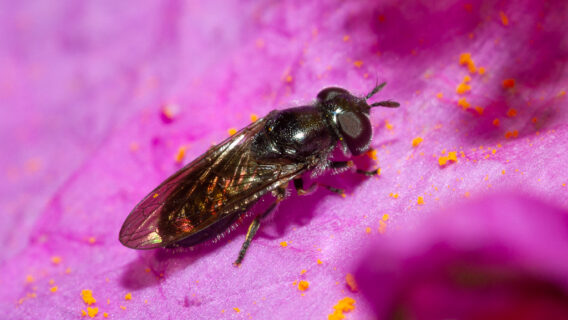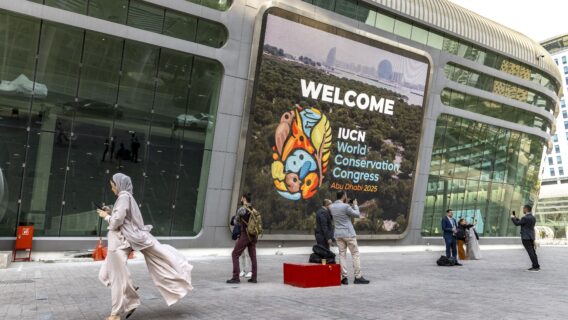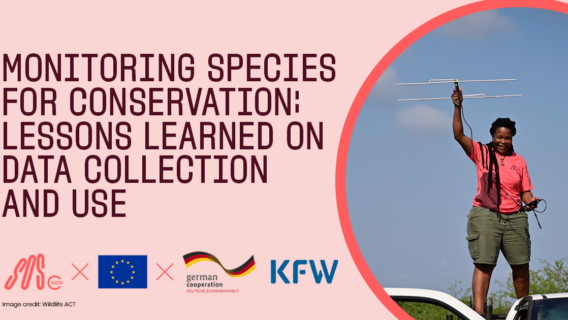Discover stories from the women driving conservation action

In many cases, they are the primary custodians of traditional ecological knowledge, contributing a deep understanding of species behaviour, seasonal cycles, and habitat needs that complements formal conservation science.
Women are also active stewards of ecosystem recovery. They replant native vegetation, maintaining wildlife corridors, and improving habitat conditions for threatened species across various landscapes. Whether through mangrove restoration, grassland management, or agroforestry, women help reverse ecosystem degradation and build resilience in the face of climate change. These efforts are central to positive conservation outcomes.
Furthermore, women are pivotal in linking biodiversity protection with social and economic well-being at the community level. Through sustainable livelihood programmes, women are reducing reliance on wildlife and forest resources, promoting local conservation goals and strengthening both household and community resilience. Their leadership in alternative income generation, such as eco-tourism, sustainable farming and crafts often translates into broader support for species and habitat conservation.
Women are also disproportionately affected by biodiversity loss and climate change due to their close dependence on natural resources for food, water, and livelihoods, particularly in rural and Indigenous communities. As primary caregivers and resource managers, women often face heightened vulnerability when ecosystems degrade and access to land, water, or forest products is no longer possible. Despite these essential roles, women continue to face structural barriers in the conservation sector, including limited access to training, resources, and leadership positions. These constraints not only undermine gender equity but weaken the overall effectiveness of conservation initiatives. Where women are fully included, conservation is more participatory, adaptive, and durable.
To fully harness the potential of women in conservation, intentional steps must be taken to create inclusive environments where women can thrive. This includes investing in gender-inclusive training and capacity-building programmes, ensuring equal access to resources and funding, and recognising and integrating traditional knowledge into formal conservation planning. It also means promoting women’s leadership at all levels, from local community committees to high-level decision-making bodies.
On the ground, this inclusive approach is already yielding results. Across conservation projects supported by IUCN Save Our Species and the Integrated Tiger Habitat Conservation Programme, women are making measurable impacts, both as conservationists and beneficiaries:

In Georgia’s Rioni River and Eastern Black Sea, critical habitats for some of the world’s most threatened sturgeon species, Tamar Beridze, a PhD candidate at Ilia State University, is leading actions to safeguard these ancient fish. With a strong background in ecology and applied genetics, Tamar is pioneering the use of acoustic telemetry in the region to better understand sturgeon migration, spawning grounds, and habitat use.
Her project not only fills crucial data gaps for species like the beluga and ship sturgeon but also strengthens local conservation capacity by training young Georgian scientists.

Driven by a passion for wildlife and years of field research, Tri Sayektiningsih, a PhD student at Seoul National University, is charting new ground in the conservation of the Moluccan babirusa, a Vulnerable and little-studied wild pig endemic to Indonesia’s Buru Island. As the project lead, Tri is deploying a large-scale camera trap study to assess the species’ distribution and density in the island’s eastern forests.
Her research will produce the first scientifically grounded data on babirusa occupancy and habitat use, informing conservation strategies for both protected and community-managed areas. Tri’s work not only fills a critical knowledge gap, but also empowers local stakeholders and supports long-term biodiversity protection through science-based recommendations and equipment donations.

Meena Tokbipi, a self-made tea entrepreneur from Assam, India, has transformed her small tea garden into a thriving business producing high-quality handcrafted green and orthodox tea.
As a project beneficiary from IUCN‘s Integrated Tiger Habitat Conservation Programme, she started selling tea leaves at low rates. However, her journey changed when one of our partners provided training, enabling her to perfect her craft. Today, her premium organic teas fetch high prices and she trains other women in tea-making, creating an all-women tea garden and supporting her community with alternative livelihoods. By promoting sustainable agroforestry and reducing the community’s dependence on forest resources, Meena’s enterprise contributes to both biodiversity conservation and habitat preservation, and demonstrates how nature-positive livelihoods can uplift communities while safeguarding critical habitats for tigers and other species that also support forest based livelihood of local communities.
Empowering women enhances conservation outcomes, fosters social equity, and builds more adaptive and sustainable systems for managing biodiversity.
When women lead, nature benefits. The path forward demands we remove the barriers, amplify their voices, and support their work not as a side effort, but as central to the future of conservation.




